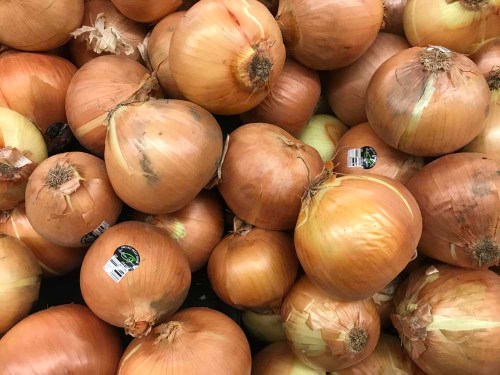Sudden warmup boosts onion crop in SE Oregon, SW Idaho
Published 1:45 pm Monday, May 1, 2023

- Warm weather is boosting the progress of this year’s onion crop along the Idaho-Oregon border.
Temperatures are up recently, boosting a southeast Oregon-southwest Idaho onion crop that was planted late in cold, wet conditions.
The region produces about a quarter of the country’s fall-storage onion crop.
Trending
Though planting was one to two weeks later than normal, the warmup means “we should have rapid germination and emergence, which is a really good thing,” said farmer Bruce Corn of the Ontario-Nyssa, Ore., area. Some planting was continuing there as of May 1.
Onion planting this year has been a trade-off between the wet, cool conditions that delayed it and the sudden arrival of “heat units important for plant growth and development,” Corn said.
Recent temperatures at the Boise airport ranged from a high of 57 degrees on April 24 to a high of 89 on April 30, according to the National Weather Service.
Some sandy, light soils can be found in the Oregon-Idaho border area that the Snake River bisects. Soils in the Ontario area are starting to dry out, and some farmers have begun to irrigate onions, sugar beets and small grains, said Corn, an Owyhee Irrigation District board member.
In contrast, water holds well in the heavy soils of the Oregon Slope between Ontario and Weiser, Idaho.
“That’s an advantage in the summer when it’s hot,” said Gabe Flick, who farms there and is a weed scientist and Oregon State University instructor. “But it can cause a challenge in the spring, when you need to dry out enough to plant.”
Trending
He does not grow onions. But among neighbors who do, “I was hearing that they were late, and lot of guys were trying to ‘mud them in,’ a challenge,” he said.
Onions start to sprout when soil reaches 48 to 50 degrees, said Lyndon Johnson, sales development manager at seed producer Crookham Co. in Caldwell, Idaho.
Those planted earlier in April “are probably up and in the first true leaf stage,” while many planted since then are still emerging, Johnson said.
Recent high temperatures help in either situation, he said. And since onions are planted in about three-quarters of an inch of soil, “you don’t have to warm up a lot of soil.”
Planted acres in the region likely will stay on the lower end of the typical 19,000-21,000 range, “probably around 19,500 acres,” said Johnson.
Acres were on the low end last year as growers faced drought, he said. This year, though the water outlook is much better, “people have history in mind” as many earned at least some profit on the 2022 crop despite high input costs.
Nyssa, Ore., grower Paul Skeen said he expects planted acreage around the five-year average. Mexico imports are up and Peru imports are above the 10-year average.
Owyhee Irrigation District last month set its allotment at 3.5 acre-feet — up from last year’s final 3.1 acre-feet, which was increased after the spring was much wetter than expected. The board will likely increase the 2023 allotment at its May meeting given that inflows remain above year-earlier levels, Corn said.









